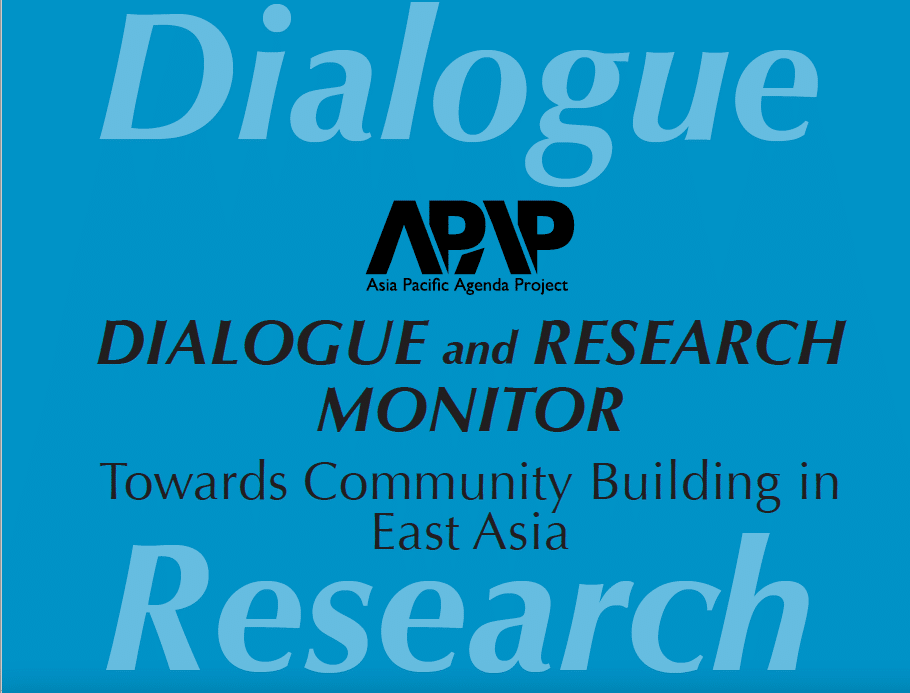The Dialogue and Research Monitor: Toward Community Building in East Asia was a publication that for more than a decade monitored policy-relevant dialogue and research throughout East Asia as a means of understanding the ongoing efforts underway by policy research institutions, policy thinkers, and public intellectuals to strengthen the emerging regional community.
it was first launched in 1995 as an initiative by Paul Evans, Shirley Yue, and a team of researchers at York University and then the University of British Columbia, with Ford Foundation funding, whereby an inventory of multilateral security dialogues in the Asia Pacific was produced. From 1998 onward, this was funded as part of JCIE’s Asia Pacific Agenda Project (APAP), a consortium of policy research institutions in the Asia Pacific region with generous funding from the Japanese Ministry of Foreign Affairs. When the initial life of that project came to an end in 2002, it was agreed that JCIE would continue to monitor research and dialogue in Asia Pacific with an expanded and greater focus on East Asian community building. JCIE viewed this monitor as a way to contribute to the building of a network among research institutes in the Asia Pacific, and to reinforce JCIE’s efforts to expand the network among policy research institutes and like-minded public intellectuals.
Each volume of the Dialogue and Research Monitor contains an inventory of dialogue and research activities occurring in the preceding six months or year that are related to security or nontraditional security—including what is increasingly regarded as “human security”— and to community building in Asia Pacific, particularly in East Asia. The regional demarcation of Asia Pacific followed the commonly understood definition of the area—East and Southeast Asia, Australia, New Zealand, and North America. Generally speaking, the dialogue and research activities covered were sponsored by institutions in Asia Pacific, had an agenda focusing on issues related to this region, and included participants mainly from this region. Activities that included participants from a single country or that were bilateral were not usually included.

